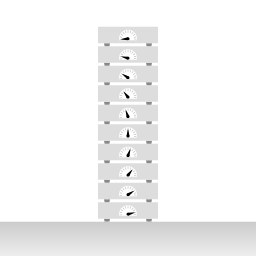Any and all "forces" that are caused by a coordinate system that is not in free fall (or is "rotating", relative to what, idk$^1$), are fictitious forces.
For instance: consider a mass $m$, at rest on a table. It experiences a fictitious force:
$$ F = mg $$
that we call "gravity" (I'm not putting vector symbols on, but feel free to do so). Is this a real force because Newton, or a fictitious force because Einstein? I'll go with the latter, but the former is fine, if you don't think too deeply about it.
Now, consider the same mass on the same table, and make a coordinate system where it sits at a radius $R$.
Is it experiencing centrifugal force? centripetal force? Coriolis force?
I suspect y'all said "no", "no" and "no". But the correct answer is: well that depends on the coordinate system.
I told you where the origin is, but I didn't tell you if it was rotating (relative to the table). Let's spin it at $\Omega$.
Now we have a problem. The mass is now undergoing uniform circular motion at $-\Omega$, which means it needs a centripetal force:
$$ F_{real} = -m\Omega^2 R $$
to keep it revolving. (I used subscript "real" since we're always told centripetal forces aren't fictitious). Also: the minus sign indicates it must push inward.
Is there a real force causing it to revolve? Maybe friction? No, the table is frictionless, ofc.
In the rotating coordinate, there is also a centrifugal force pushing it outward:
$$ F_c = +m\Omega^2 R $$
While the magnitude matches $F_{real}$, it is in the wrong direction.
Let's add the Coriolis force:
$$ F_C = 2m\Omega v $$
with $v=-\Omega R$:
$$F_C = -2m\Omega^2 R $$
Well that's convenient. The total fictitious forces are:
$$ F_F = F_c + F_C = +m\Omega^2 R -2m\Omega^2 R = -m\Omega^2R = F_{real} $$
exactly what it takes to keep the mass revolving--even though the naive view is that nothing is even moving.
Now to tackle you question: let's turn friction back on, and spin the table at $\omega$
The centripetal force keeping it revolving is now:
$$ F_{real} = -m(\omega-\Omega)^2 R $$
The centrifugal force does not depend on velocity, only distance from the rotation axis, so it is unchanged:
$$ F_c = m\Omega^2 R $$
and the Coriolis force depends on the velocity ($v=(\omega-\Omega)R$, measured in the rotating frame):
$$ F_C = 2m\Omega v = 2m\Omega(\omega-\Omega)R $$
which satisfies:
$$ F_{real} = F_c + F_C $$
...but, if we want to know how much of that centripetal force is actualy "real", that is: attributable to friction, we need to set $\Omega=0$, so that:
$$ F_c = F_C = 0 $$
$$ F_{real} = m\omega^2 R $$
That is, in an inertial frame there are no fictitious forces and a real frictional force is required to keep the mass revolving in a circle.
If we imagine that the mass/fraction models a roller coaster car/track, then we set $\Omega=\omega$ and find that:
$$ F_C = 0 $$
There is no Coriolis force, because the roller coaster has no velocity in a roller coaster frame.
The centrifugal forces is:
$$ F_c = m\Omega^2 R $$
which means you, in the car (you're $m$) feel a gee-force pulling you outward.
When we calculate the "real" centripetal force we find:
$$ F_{real} = -m(\omega-\Omega)^2 R = 0 $$
Which seems problematic. There is no centripetal force because you are stationary--in the rotating frame.
The reason you don't fly off is because there still is a frictional force (or track force, irl, I'm still talking about the model of a mass on a spinning table) that counteracts the centrifugal force.
Now when this stuff is traditionally taught, we always say there is fictitious force pulling your outward and a centripetal force keeping you in circular motion, but as demonstrated: those statements are mixing reference frames, which leads to confusion.
The naming of all the forces depends on the choice of coordinates.
1 We traditionally say we rotate "relative to the fixed stars" (or maybe now, we can say the CMB or JWST's $Z=10$ ultra distance galactic catalogue), but there is a problem. What if my little though problem is set up near the fictional Gargantua, and a non-zero vortex line:

runs through my table? Well, then I have to rotate relative to the fixed stars in order to have zero centrifugal and Coriolis forces.


